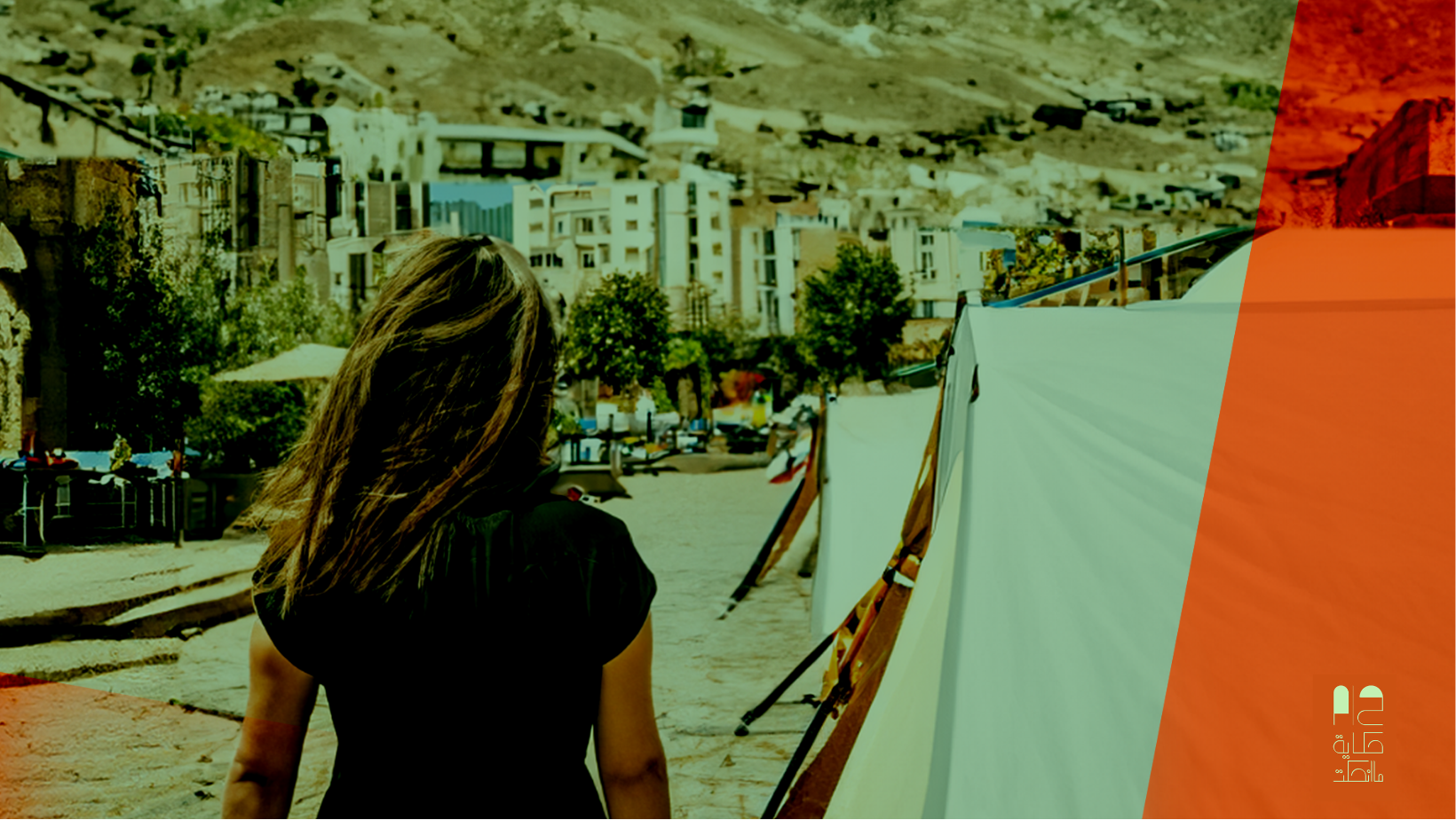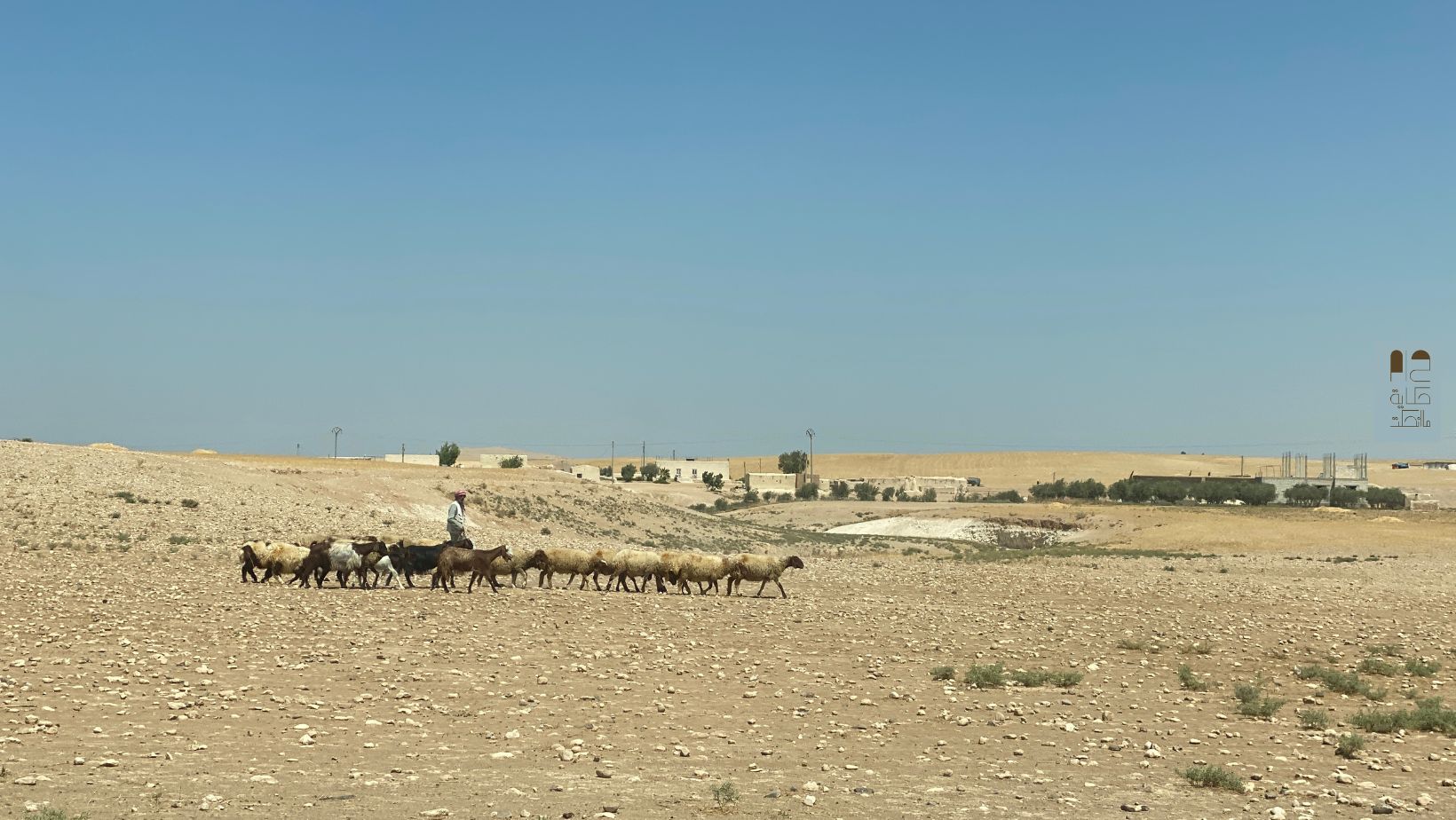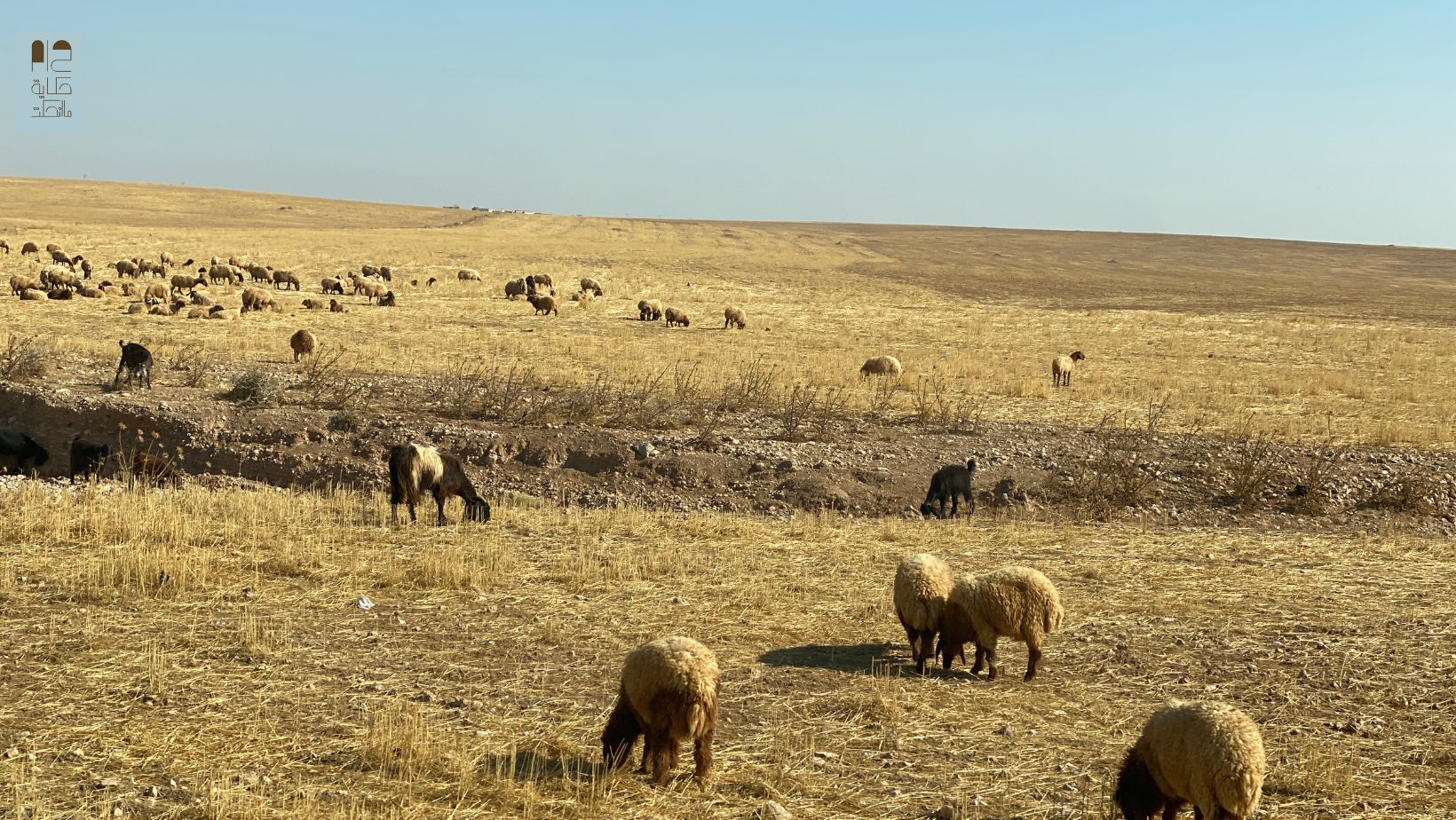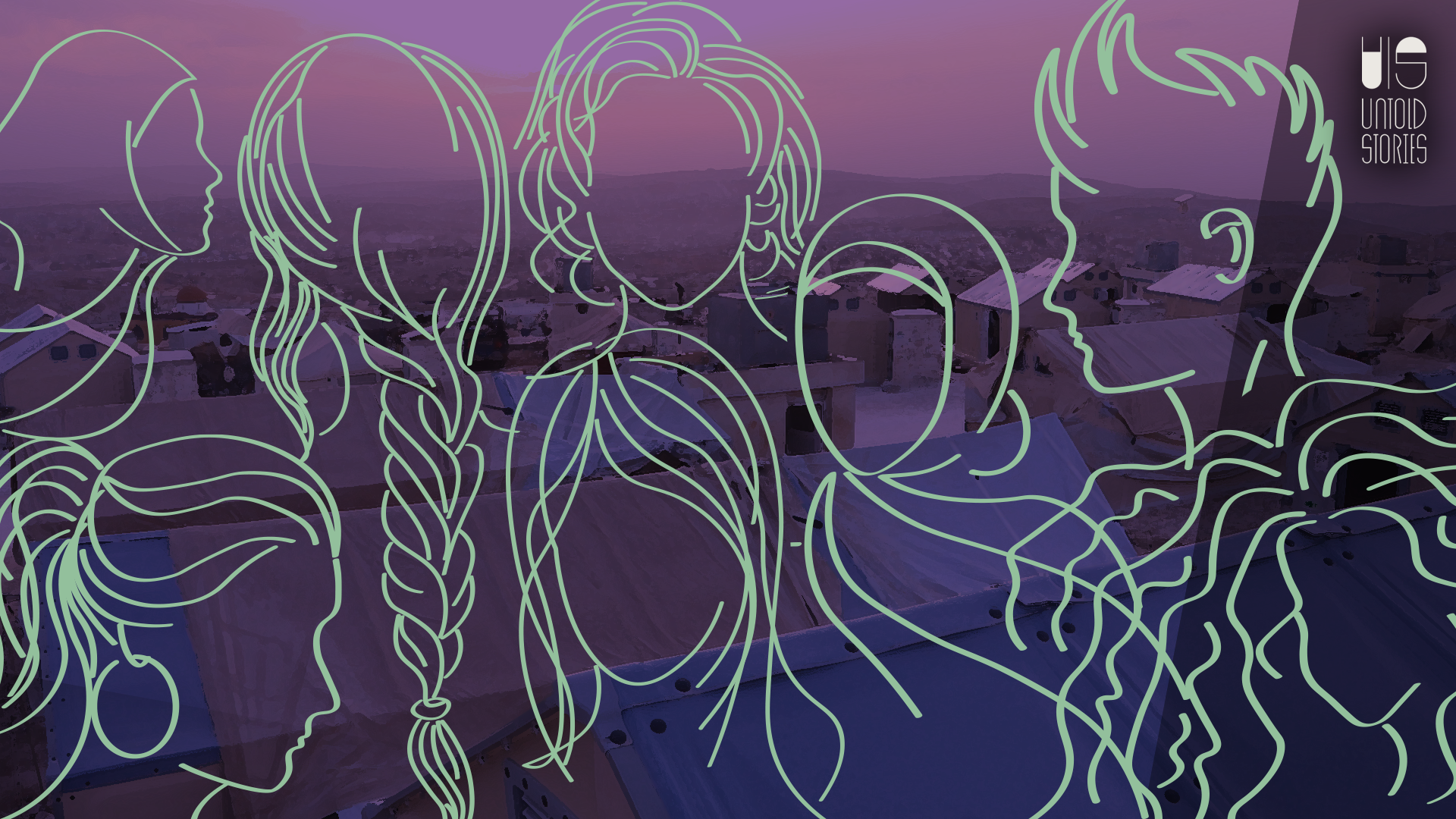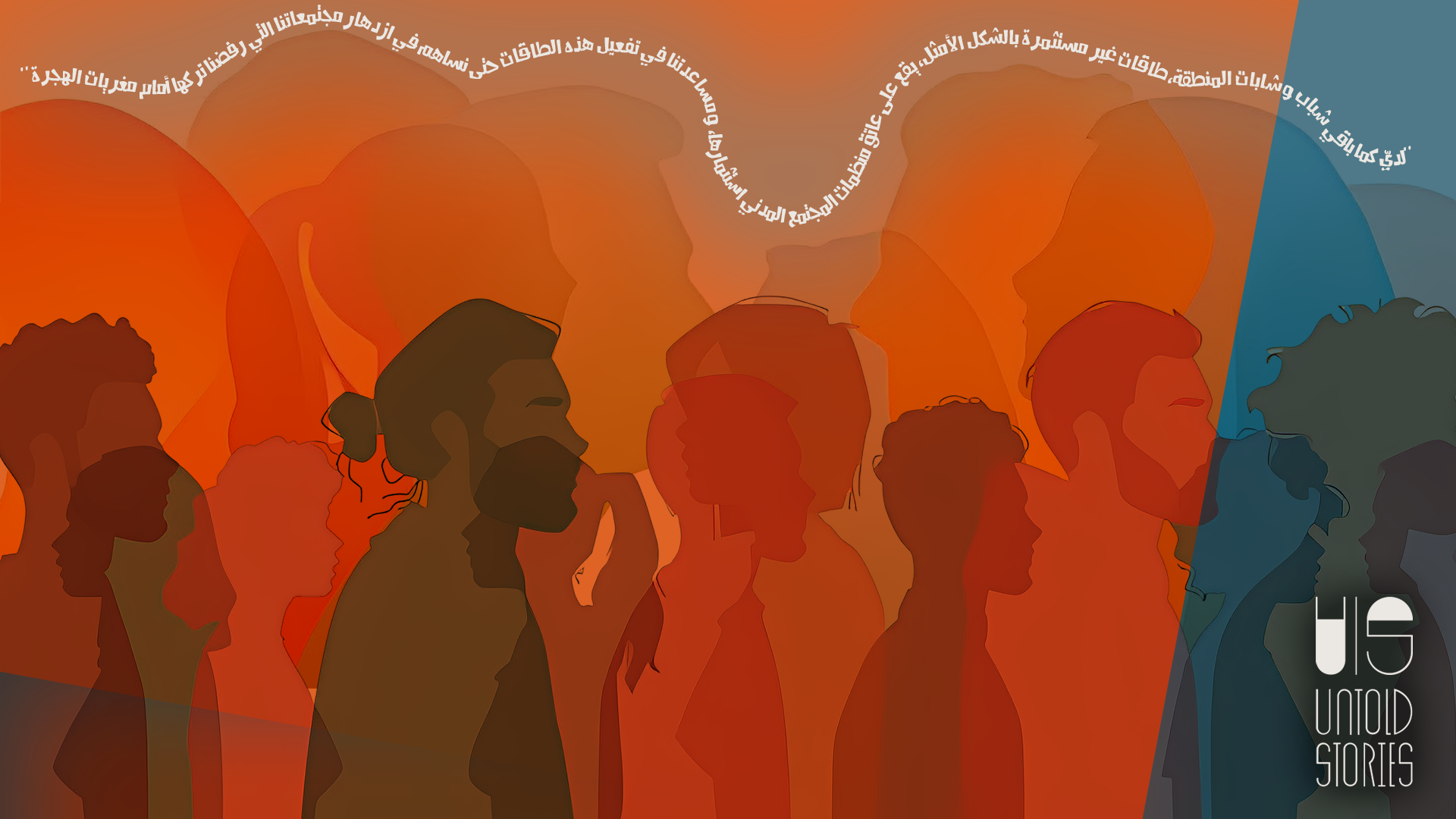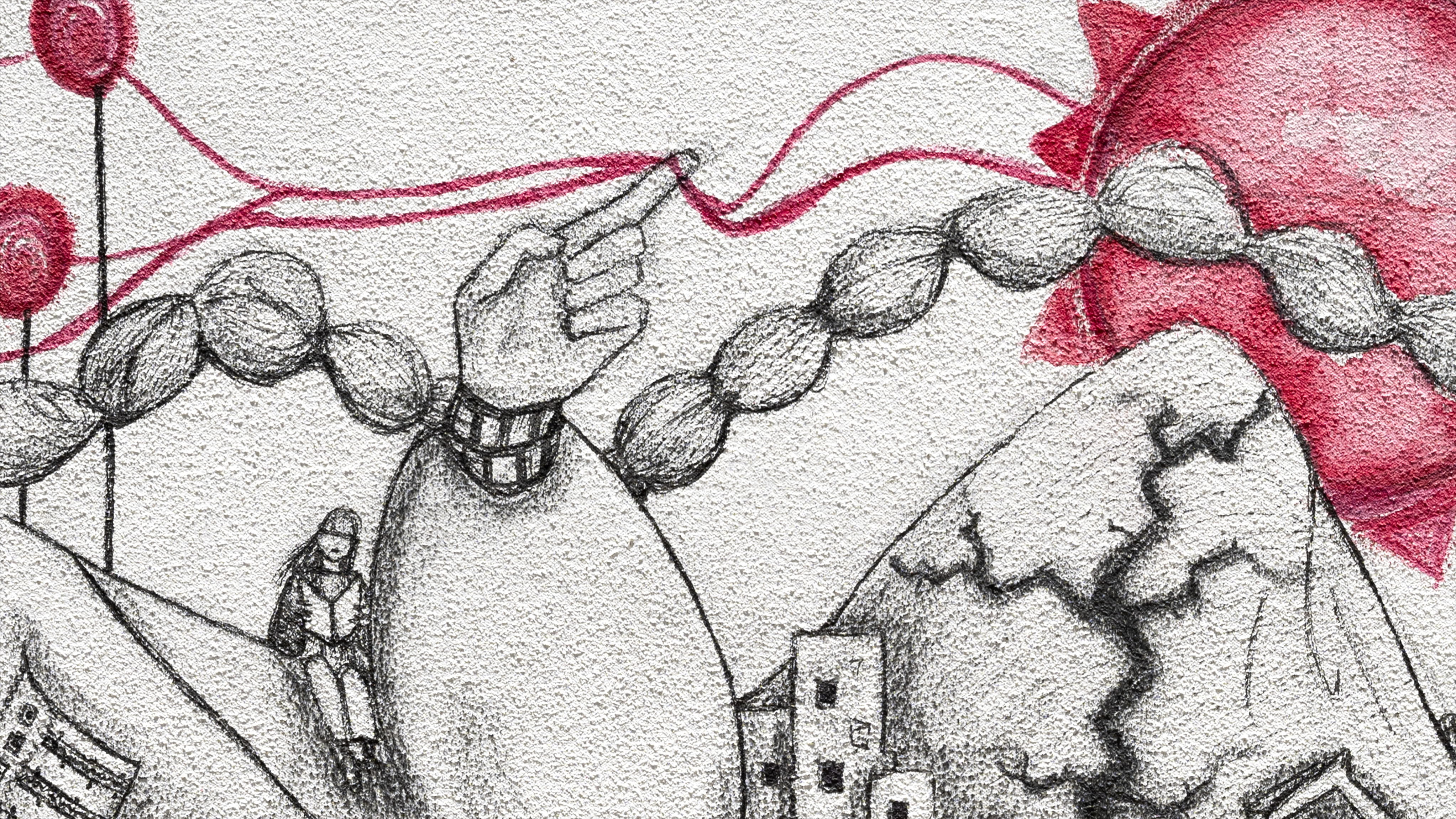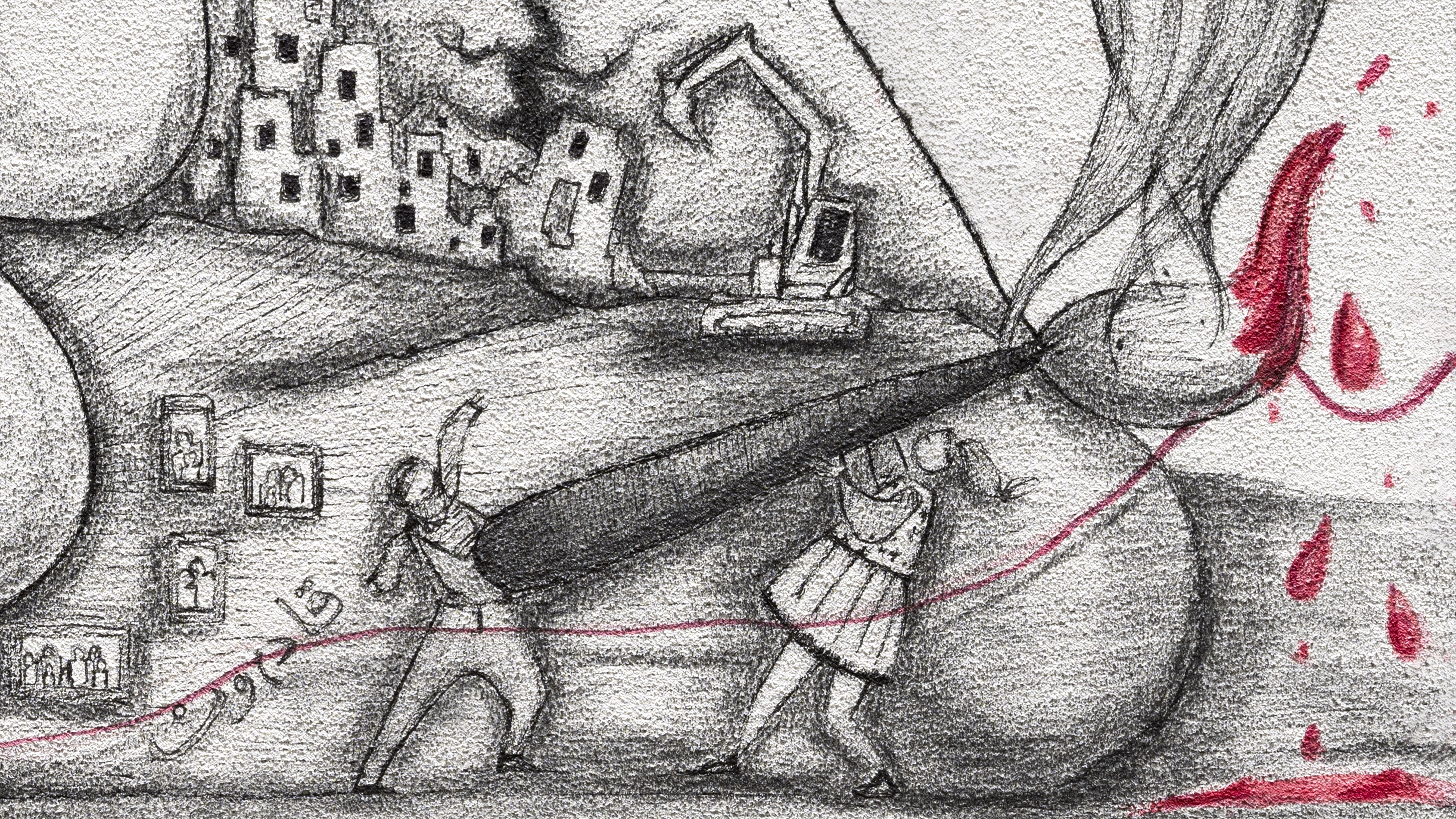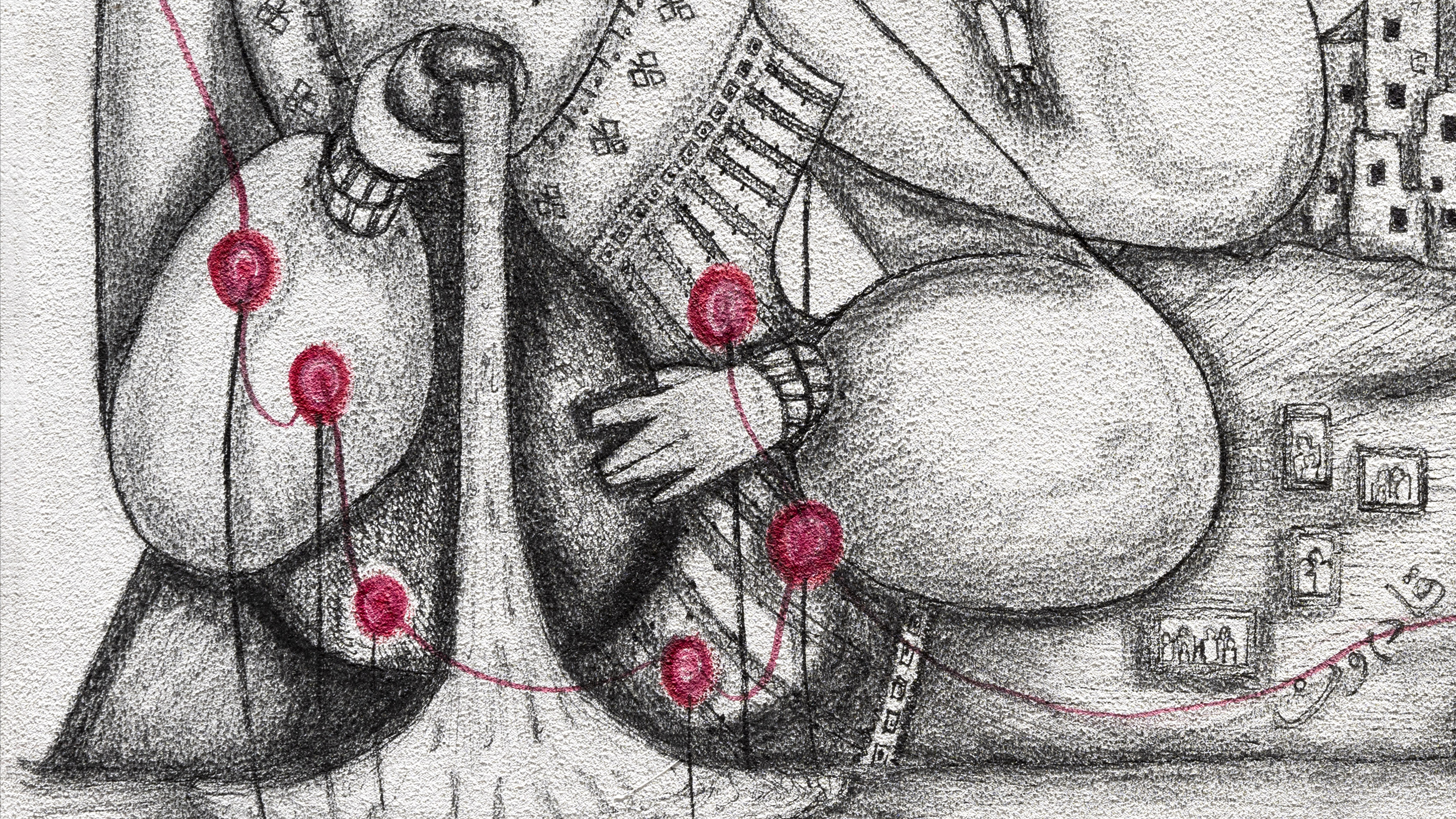“This article was produced within the project «Empowering the Next Generation of Syrian Women Journalists» in partnership between the «Syrian Female Journalists Network» and «UntoldStories». This article was produced under the supervision of journalist Reem Tekriti.”
“Today, I only have twenty sheep left. I used to own 1700 heads five years ago; but, some died, and I sold the others at a low price due to drought. I am unable to reach enough water sources because of the decreasing water levels in the Euphrates River”, says Ahmad, a 45-year-old shepherd from southern Raqqa, while describing his and others' situation.
Climate change has negatively impacted both the agricultural and livestock sectors, threatening their sustainability as sources of livelihood and income for many residents in north-eastern Syria, especially those who inherited these professions from their families. The continued decline of green spaces because of harmful practices and the absence of regulations are significantly harming both of those sectors.
“The water level of the Euphrates River has started decreasing gradually in recent years because of two main factors. The first is the fact that Turkey reduced Syria’s share of the river water, which totals 600 cubic meters per second, allowing it to receive only 250 cubic meters per second. The second factor is climate change and rising temperatures which lead to excessive water evaporation, affecting livestock and agricultural activities”, explains Mohammed Al-Ali, co-chair of the Agriculture and Irrigation Committee affiliated with the Autonomous Administration in Raqqa.
Water Sources are Decreasing
According to Al-Ali, 80% of the population in Raqqa relies on water from the Euphrates river to meet their needs, especially in livestock and agricultural sectors, the primary sources of income in the region. Originally, irrigated areas covered around 90 thousand hectares, but have currently decreased by almost half due to the decline in water levels of the Euphrates river. This water shortage has created a significant gap in agricultural and livestock-based livelihoods. Furthermore, the emergency situation resulting from drought and related interventions in water distribution to respond to short-term emergency shortages, including the provision of food for livestock, exacerbated the negative impact on both sectors and impacted the market value of cattle, sometimes leading to its stagnation.
Syria has experienced three drought waves since 1980, with the most severe occurring between 2006 and 2010, according to a study by Pax for Peace. The country also suffered from record-low levels of rainfall in the summer of 2021 and a sharp decline in the flow of water into the Euphrates, which impacted livestock breeding due to the scarcity of grazing areas. In fact, this means that thousands of sheep, cattle, goats and camels lack pastures and access to water sources, according to the same study.
Hevin Sheikho, former co-chair of the Environmental Authority in the Autonomous Administration of north-eastern Syria and environmental expert, stated, “The north-eastern regions in Syria have suffered from the compounded impact of climate change due to the long years of war, which led to a decline in green areas and the inability to expand them due to semi-arid climate conditions and the effects of war. Moreover, human practices such as the burning and cutting of trees resulted in the depletion of such spaces. Water shortages, caused by a variety of political and human factors, created environmental and health problems and decreased grazing areas for livestock, due to the absence of basic elements needed to sustain wildlife in the region.”
Environmental journalist Zaher Hashem believes that “in addition to the climatic conditions leading to water shortages, loss of crops and threats to food security and livestock, the uncontrolled use of river and groundwater aggravates drought and its impacts.” He adds that “the conditions of war, the absence of good governance and the weakness of agricultural policies have caused increasing water violations, such as river encroachment and the installation of water extraction pumps for irrigation without planning. In addition, residents have been digging unlicensed wells, leading to the gradual depletion of groundwater. The adoption of primitive irrigation methods has also worsened the crisis.”
Droughts: Death and Diseases
The situation in Hasakah is not better than the one in Raqqa. Rising temperatures caused the spreading of various diseases among sheep such as Pasteurellosis (a contagious bacterial respiratory disease that manifests as pneumonia or septicemia). According to Haji Abdi, a 44-year-old livestock breeder living in rural Hasakah “this disease spread widely due to water shortages and droughts. Additionally, foot-and-mouth disease has also been affecting livestock due to high temperatures.”
Saad Al-Fayyad, resident of Jdeidet Akidat in rural Deir Ezzor, has been significantly impacted by climate change disasters. He was unable to sustain what remains of his sheep and cattle to preserve the profession he inherited from his father and grandfather. Just like many other livestock breeders in north-eastern Syria, he was forced to sell half of what he owned of cattle due to water scarcity, limited pastures, the high cost of fodder and the spread of diseases leading to the death of his livestock. Al-Fayyad shares sadly: “it feels as if my child is sick, and I can’t do anything to help him. It’s truly heartbreaking.”
He adds that “livestock breeding constitutes 80% of income sources in Deir Ezzor, alongside agriculture. The recent decrease in rainfall impacted both of these sectors and forced farmers as well as breeders to purchase water, which incurs additional costs, or to rely on well water, which is calcareous and causes disease among livestock.”
A report released on October 4th, 2022 by the United Nations Office for the Coordination of Humanitarian Affairs (OCHA) highlighted that “the decrease and irregularity of rainfall during the winter of 2020/2021, accompanied by above-average temperatures led to droughts in northern and north-eastern Syria, as well as other parts of the country, with significant losses in crop and livestock.”
Additional Challenges, Decrease in Livestock and Insufficient Support
In the face of climate change challenges that livestock breeders in north-eastern Syria face, and which now pose a real threat to the livelihood of approximately 40% of the population in the region, according to IMMAP statistics, relevant authorities are trying to provide some support. For instance, Mohammad Sharbatji, Director of the Livestock Committee affiliated with the Autonomous Administration in Raqqa, explained that they are supplying livestock breeders with fodder and medicines, in addition to providing wheat bran at a subsidized price through the Agricultural Community Development Company. However, breeders still consider this level of support low, and that the allocated quantity of fodder is insufficient to meet the needs of their livestock, which forces them to purchase additional material from suppliers at high prices. For instance, the price of one kilogram of barley has risen to 4500 Syrian pounds, up from 400 pounds five years ago.
The breeder Haji Abdi clarified that “the continued collapse of the Syrian pound against the US dollar has increased their suffering because they pay for fodder and medicine in foreign currency while selling their dairy and cheese products in Syrian pounds. As a result, they sustain additional losses.”
He adds that “the years of drought in the region have affected birth rates among livestock, which decreased by almost half because of insufficient food, often leading to cases of miscarriage and birth defects at a rate of 10%.”
The report issued by OCHA confirmed this claim and stated that the decline in agricultural productivity to its lowest level in fifty years has negatively impacted the availability and prices of fodder.
Eid Mostafa, a 72-year-old livestock breeder and farmer from Al-Ahwas in Raqqa, points to what remains of his cattle and says: “only 10% of the livestock will be left in the area in the next three years if we do not receive adequate support from relevant authorities. Personally, I lost 700 sheep out of the 2100 I previously owned, and their number is still decreasing.”
The report issued by OCHA confirmed this claim and stated that the decline in agricultural productivity to its lowest level in fifty years has negatively impacted the availability and prices of fodder. Moreover, the decrease of grazing areas contributed to the decline in livestock breeding and their prices by at least 20 to 30%.
Fish Wealth is not Immune to Danger
According to international studies and reports, Syria is among the countries that will suffer from water stress in the future. In the context of climate change in Syria and north-eastern Syria in particular, which reduced water sources, agricultural and grazing areas, pastoral communities are struggling to preserve professions they have inherited from their ancestors.
After relying on fishing as a source of income for ten years, Ali Al-Mohammed, from the village of Hamra Al-Nasser in the eastern part of rural Raqqa, has been practicing it as a hobby for the past two years. However, he had to change jobs to support this family.
The fisherman, who cannot keep it as a profession yet cannot distance himself from it, says that the impact of climate change, years of drought and the decrease in river and dam water in recent years in North-eastern Syria have affected the agricultural and livestock sectors as well as the fisheries. “In particular, north-eastern regions are characterized by abundant surface water sources such as the Euphrates and Tigris rivers, in addition to several other dams and groundwater, previously a source of livelihood for many residents who relied on these sources for fishing. The decline in the Euphrates water levels, due to various factors including Turkey’s control of water flow to the Syrian side and illegal fishing practices, has shrunk the fishing profession.
Al-Mohammed explains that he used to catch between 50 and 300 kilograms of fish daily, which covered his basic financial needs. However, in the last two years, the quantity of fish he catches decreased, making it less profitable to travel to different fishing locations.
Muhbat Hussein, a fish merchant from Qamishli, mentions that “the quantity of fish we used to catch has decreased by 80 to 90% due to the decline in different fish types in the dams of Syrian islands. As a result, the daily quantities of fish we sell have also dropped from ten tons to less than two tons from the dams of Al-Bassel, Mizkif and Al-Safan as well as from the Tigris river, due to the decrease in water levels caused by droughts. In addition, some fish types such as carp, catfish and whitefish, previously abundant in these dams, have become extinct.
Furthermore, Mahmoud Hamzawi, director of the veterinary clinic in Raqqa stated that “climate change and water shortages have reduced the number of fish and made water unsuitable for them in terms of size as well as nutritional and respiratory needs. Pollution levels have also increased due to water recession, leading to fish scarcity and the extinction of some species from Raqqa’s different bodies of water.”
Solutions to Preserve Animal and Fish Resources
Hevin Sheikho, former co-chair of the Environmental Authority in the Autonomous Administration of north-eastern Syria believes that mitigating the impact of climate change on animal and fish resources requires “immediate environmental and agricultural interventions. In addition, it is vital to find a permanent solution to the water cut-off problem to increase green areas and plant trees. Increasing governmental and civil efforts to promote environmental awareness is crucial for preserving and ensuring the sustainability and development of these resources.”
Dr. Muneer Samo, a lecturer at Rojava University in Qamishli and an expert in natural resources and the environment, also explained that “the impact of climate change on animal resources can only be mitigated through providing a suitable environment for livestock. This includes shielding them from solar radiation through building special barns that ensure continuous air circulation, protect them from excessive heat and reduce the risk of skin cancers and allergic reactions.”
Samo also stated that “refining the quality of fertilizers can reduce the emission of nitrogen oxides. In addition, enhancing fodder quality and efficiency to improve digestive processes in livestock, using enzymes that aid digestion and ensuring continuous supply of clean water are crucial. Furthermore, providing animals with a balanced diet of minerals and vitamins can help alleviate heat stress. Last but not least, breeding new types of farm animals that can withstand high temperatures such as cattle, small ruminants, poultry, duck, turkey and quail is also essential.”
Similarly, breeders believe that the solution for the aforementioned problems is to secure sufficient water for agriculture and livestock and to provide the necessary quantities of fodder and other supplies, such as medicine, in Syrian pounds at subsidized prices. They also emphasize the need to control the market and regulate exports to preserve the remaining number of livestock.
Some international and local organizations are trying to support animal wealth in the north-eastern regions of Syria. However, the lack of sustainability of these projects still poses a threat to the breeders’ livelihoods. For example, “Dyrna”, an organization operating in Deir Ezzor, implemented several projects to support animal wealth between 2019 and 2020, targeting different areas in the region. Their activities included vaccinating sheep and cattle against contagious diseases such as sheep pox, hemorrhagic septicemia, and bovine pleuropneumonia as well as distributing veterinary supplies and fodder. However, this kind of support requires the collaboration of international and local organizations to provide sustainable assistance to the livestock sector in the region. Ghazi Al-Debs, project manager at the organization considers that this is particularly crucial as animal wealth is the main source of income for the population in the absence of industrial employment opportunities due to the destruction of facilities and the deterioration of infrastructure because of the war.
According to the recommendations by Pax for Peace, assistance from international non-governmental organizations to secure fodder during future drought years is much-needed for herders. This should be managed carefully in accordance with international humanitarian standards and the principle of “do no harm”, as the unequal distribution of aid has led to tensions among residents of some villages. The organization also suggested that regional authorities and governments conduct a comprehensive study on the needs of pastoral communities. Last but not least, they called on the international community to broker international agreements for the management of transboundary water sources.
From his side, fisherman Ali Al-Mohammed considers that preserving fish wealth needs “the introduction of new plant species or freshwater fish with qualities suitable for the water of the Euphrates river. They should be capable of growing larger in size than the currently existing species. In addition, there is a need for increased support from international and local organizations to establish fish farms and provide fishing equipment.


